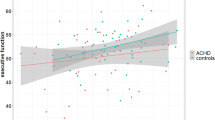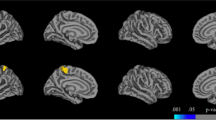Abstract
The effects of early hydrocephalus and related brain anomalies on cognitive skills are not well understood. In this study, magnetic resonance scans were obtained from 99 children aged from 6 to 13 years with either shunted hydrocephalus (n=42) or arrested (unshunted) hydrocephalus (n=19), from patient controls with no hydrocephalus (n=23), and from normal, nonpatient controls (n=15). Lateral ventricle volumes and area measurements of the internal capsules and centra semiovale in both hemispheres were obtained from these scans, along with area measurements of the corpus callosum. Results revealed reductions in the size of the corpus callosum in the shunted hydrocephalus group. In addition, lateral ventricle volumes were larger and internal capsule areas were smaller in both hemispheres in children with shunted and arrested hydrocephalus. The centra semiovale measurements did not differentiate the groups. Correlating these measurements with concurrent assessments of verbal and nonverbal cognitive skills, motor abilities, and executive functions revealed robust relationships only between the area of the corpus callosum and nonverbal cognitive skills and motor abilities. These results support the theory of a prominent role for the corpus callosum defects characteristic of many children with shunted hydrocephalus in the spatial cognition deficits commonly observed in these children.
Similar content being viewed by others
References
Barkovich AJ (1995) Pediatric neuroimaging, 2nd edn. Raven Press, New York
Beery K (1982) Revised administration, scoring, and teaching manual for the developmental test of visual-motor integration. Modern Curriculum Press, Cleveland
Benton AL, Hamsher K des, Varney N, Spreen O (1983) Contributions to neuropsychological assessment: a clinical manual. Oxford University Press, New York
Del Bigio MR (1993) Neuropathological changes caused by hydrocephalus. Acta Neuropathol 85:573–585
Denckla MB, Rudel RG (1974) Rapid ‘automatized’ naming of pictured objects, colors, letters, and numbers by normal children. Cortex 10:186–202
Dennis M, Fitz CR, Netley CT, Sugar J, Derek CF, Harwood-Nash MB, Hendrick HB, Hoffman HJ, Humphreys RP (1981) The intelligence of hydrocephalic children. Arch Neurol 38:607–615
Fletcher JM, Bohan TP, Brandt ME, Brookshire BL, Beaver SR, Francis DJ, Davidson KC, Thompson NM, Miner ME (1992) Cerebral white matter and cognition in hydrocephalic children. Arch Neurol 49:818–824
Fletcher JM, Brookshire BL, Bohan TP, Brandt ME, Davidson KC (1995) Early hydrocephalus. In: Rourke BP (ed) Syndrome of nonvebal learning disabilities: neurodevelopmental manifestations. Guilford, New York
Galaburda AM, Wang PP, Bellugi U, Rossen M (1994) Cytoarchitectonic anomalies in a genetically based disorder: Williams syndrome. Neuroreport 5:753–757
Heaton RK (1981) A manual for the Wisconsin Card Sorting Test. Psychological Assessment Resources, Odessa, Fla
Hirsch JF (1994) Consensus in long-term outcomes in hydrocephalus. Child's Nerv Syst 10:64–69
Knights RM, Moule AD (1968) Normative data on the Motor Steadiness Battery. Percept Mot Skills 26:643–650
McCarthy D (1972) McGarthy Scales of Children's Abilities. Psychological Corp, New York
McCullough D (1990) Hydrocephalus: etiology, pathologic effects, diagnosis, and natural history. In: Scott RM (ed) Hydrocephalus, Williams & Wilkins, Baltimore, pp 180–199
Raimondi AJ (1994) A unifying theory for the definition and classification of hydrocephalus. Child's Nerv Syst 10:2–12
Riva A, Milani N, Giorgi C, Pantaleoni C, Zorzi C, Devoti M (1994) Intelligence outcome in children with shunted hydrocephalus of different etiology. Child's Nerv Syst 10:70–73
Rosner J, Simon P (1971) The Auditory Analysis Test. J Learn Disabil 8:24–37
Sainte-Rose C, Piatt JH, Pierre-Kahn A, Hirsch JF, Hoffman HJ, Humphreys RP (1991–1992) Mechanical complications in shunts. Pediatr Neurosurg 17:2–9
Shallice T (1982) Specific impairments of planning. Philos Trans R Soc Lond 298:199–209
Sobkowiak CA (1992) Effect of hydrocephalus on neuronal migration and maturation. Eur J Pediatr Surg 2 [Suppl I]: 7–11
Van der Knapp MS, Valk J, Bakker CJ, Schvoneveld M, Faber JAJ, Willemse J, Gooskens RHJM (1991) Myelination as an expression of the functional integrity of the brain. Dev Med Child Neurol 33:849–857
Author information
Authors and Affiliations
Rights and permissions
About this article
Cite this article
Fletcher, J.M., Bohan, T.P., Brandt, M.E. et al. Morphometric evaluation of the hydrocephalic brain: relationships with cognitive development. Child's Nerv Syst 12, 192–199 (1996). https://doi.org/10.1007/BF00301250
Received:
Revised:
Issue Date:
DOI: https://doi.org/10.1007/BF00301250




